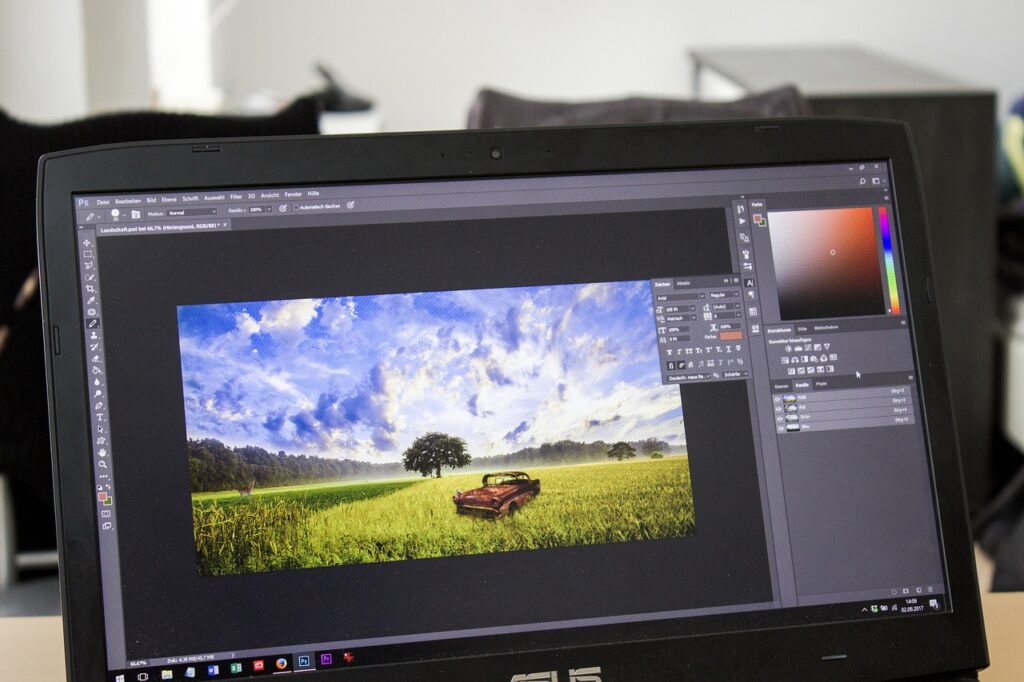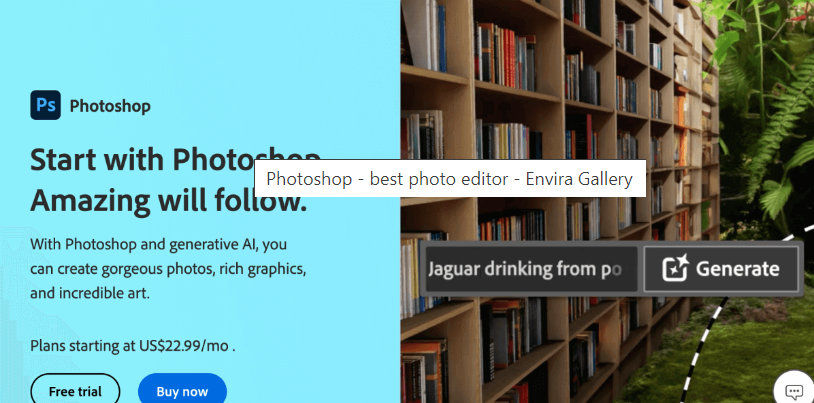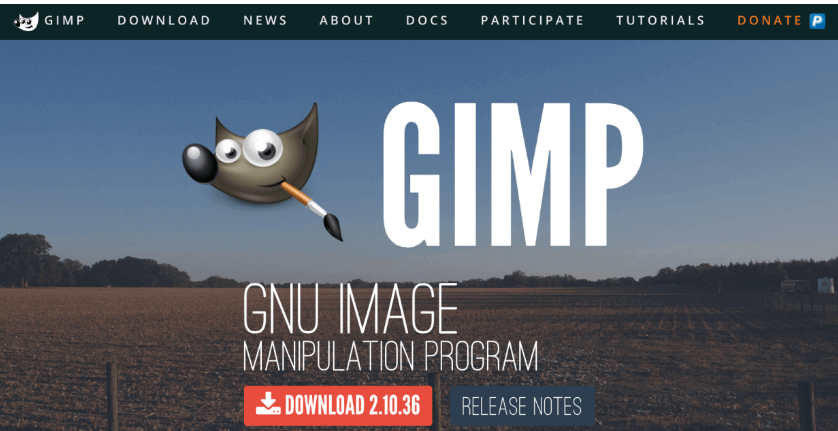
Photography is more than just capturing the right moment; it’s about telling a story, evoking emotion, and sharing a vision. While taking the shot is the first step, post-processing through editing software is where the magic happens. Editing allows photographers to bring out the best in their photos by fine-tuning elements such as exposure, color, contrast, and more.
In today’s digital world, the choice of editing software can significantly influence the outcome of a photo. The right software will enhance a photographer’s workflow, improve productivity, and offer the necessary tools to transform good shots into extraordinary ones. This blog post introduces some of the best editing software available for photographers, from industry-standard applications to niche options tailored for specific needs.
Understanding the Importance of Photo Editing
Before diving into specific software, it’s essential to understand why photo editing is a vital part of photography.
- Enhancing Visual Appeal
Enhancing visual appeal through photo editing can transform a good image into an extraordinary one. Adjusting elements like brightness, contrast, saturation, and sharpness brings out the vibrancy and detail that may not have been captured perfectly in-camera. These edits help highlight the subject, refine the composition, and evoke emotion, creating a captivating final image that resonates with viewers and leaves a lasting impact. In essence, editing allows photographers to bring their creative vision to life.
- Correcting Mistakes
Even the most skilled photographers encounter challenges like improper lighting, unwanted objects, or minor imperfections in their shots. Photo editing is an essential tool for correcting these mistakes, allowing for adjustments in exposure, color balance, and composition. By removing distractions, refining details, or adjusting shadows and highlights, photographers can rescue flawed images and turn them into visually stunning pieces. Editing ensures that every photo aligns with the intended vision, delivering a polished final product that tells a compelling story, free of distractions or technical errors.
- Developing a Unique Style
A photographer’s unique style is their visual signature, setting their work apart from others. Through consistent editing techniques, such as specific color grading, contrast adjustments, and tonal enhancements, photographers can create a distinctive aesthetic that reflects their creative vision. Developing a unique style not only helps build personal brand identity but also adds emotional depth and character to every image. Whether it’s the mood evoked by dark tones or the vibrancy of bright, saturated colors, editing is key to crafting a recognizable and memorable photographic style.
- Preparing for Print
Printing photos requires more than just selecting an image—it’s about ensuring that every detail translates perfectly from screen to paper. Editing plays a crucial role in preparing for print by adjusting resolution, sharpening details, and fine-tuning colors to match print-specific profiles like CMYK. Ensuring proper contrast, brightness, and tonal balance ensures that the printed image maintains its vibrancy and depth. Whether for galleries, magazines, or personal use, careful editing guarantees that your photos look just as stunning in print as they do on screen.
Essential Features to Look for in Photo Editing Software
Before choosing an editing software, it’s essential to identify the features that align with your photography needs. While all photographers have different requirements, certain features are universally beneficial.
- Raw File Support
RAW file support is essential for photographers who seek maximum flexibility in post-production. Unlike compressed formats like JPEG, RAW files preserve unprocessed data directly from the camera sensor, offering greater control over exposure, color correction, and detail enhancement during editing. By using software that supports RAW files, photographers can make significant adjustments without compromising image quality, ensuring the final output retains all the depth and richness of the original shot. For professionals, RAW support is key to achieving high-quality, polished results.
- Non-Destructive Editing
Non-destructive editing is a vital feature for photographers, allowing you to make adjustments to images without permanently altering the original file. This method preserves the original data, enabling you to experiment with exposure, colors, and effects while retaining the ability to revert or refine edits at any time. By using non-destructive techniques, such as layers and masks, photographers can maintain the integrity of their work, ensuring flexibility and creative freedom throughout the editing process. It’s an essential tool for efficient, risk-free post-production.
- Comprehensive Adjustment Tools
Comprehensive adjustment tools are crucial for achieving precise control over your images during editing. These tools, which include features like exposure correction, contrast adjustments, color balancing, and advanced controls such as curves and gradient filters, allow photographers to fine-tune every aspect of their photos. With a full suite of adjustment options, you can enhance details, correct imperfections, and achieve the desired mood and style, ensuring your images stand out with professional-quality results.
- Presets and Filters
Presets and filters are powerful tools for streamlining your editing process and achieving a cohesive look across your photos. Presets apply predefined adjustments to your images, allowing you to quickly enhance color, tone, and style with just a click. Filters can add artistic effects or mood enhancements, giving your photos a unique flair. Both features save time, provide creative inspiration, and help maintain consistency in your work, making them essential for efficient and effective photo editing.
- Exporting Options
Exporting options are crucial for delivering your photos in various formats and resolutions suitable for different uses. High-quality export settings ensure that your images retain their clarity and detail whether they’re intended for print, web, or social media. Look for software that offers flexibility in export formats such as JPEG, TIFF, and PNG, as well as customizable settings for resolution and color profiles. Efficient exporting ensures your photos are optimized for their intended platform, preserving their visual impact and quality.
Top Editing Software for Photographers
Let’s dive into some of the best software options available today, covering both industry standards and specialized tools for different photography needs.
Adobe Lightroom: The Industry Standard

Overview
Adobe Lightroom has long been the go-to software for photographers. Known for its intuitive interface and powerful capabilities, Lightroom allows users to organize, edit, and export photos all in one place.
Key Features
- Non-destructive Editing: Lightroom offers a non-destructive workflow, ensuring that your original files are never altered.
- Batch Processing: Lightroom’s batch editing features allow you to apply the same edits across multiple images, which is a huge time-saver for event photographers.
- Raw Support: Lightroom supports virtually all RAW file formats.
- Mobile Integration: Lightroom has mobile apps for editing on the go. Edits made on mobile sync with the desktop version.
- Cloud Storage: With Lightroom’s cloud storage capabilities, you can access and edit your photos from anywhere.
Ideal Use Cases
Lightroom is perfect for photographers who need robust photo organization and advanced editing tools in one platform. It’s ideal for wedding photographers, travel photographers, and portrait photographers who deal with large volumes of images.
Pros and Cons
- Pros:
- User-friendly interface
- Excellent organizational tools
- Comprehensive presets and editing tools
- Cons:
- Subscription-based
- Limited retouching tools compared to Photoshop
Adobe Photoshop: Advanced Editing for Professionals

Overview
Adobe Photoshop is another industry-leading software, offering more advanced editing features compared to Lightroom. Photoshop excels in retouching, compositing, and manipulating images beyond basic adjustments.
Key Features
- Layer-Based Editing: Photoshop’s layers system is perfect for detailed photo manipulation, allowing for advanced compositing and retouching.
- Precise Selections: Tools like the Pen tool and Magic Wand allow for exact selections, making it easier to remove backgrounds or make localized edits.
- Advanced Retouching: Photoshop offers powerful retouching tools, including healing brushes, clone stamps, and frequency separation techniques.
- Integration with Other Adobe Products: Photoshop works seamlessly with other Adobe apps like Lightroom, making it easy to move between editing and organizing workflows.
Ideal Use Cases
Photoshop is ideal for photographers who need precise control over every aspect of their images. It’s particularly useful for fashion photographers, commercial photographers, and fine art photographers.
Pros and Cons
- Pros:
- Unmatched editing precision
- Industry-standard for image manipulation
- Powerful retouching and compositing tools
- Cons:
- Steep learning curve
- Requires a Creative Cloud subscription
Capture One: A Photographer’s Powerhouse

Overview
Capture One is a professional-grade editing software known for its excellent color grading tools and image quality. It’s a favorite among studio photographers, offering advanced tethering options and fine-tuned control over every aspect of image processing.
Key Features
- Superior Color Grading: Capture One’s color tools are among the best in the industry, offering fine-tuned control over hue, saturation, and luminance.
- Advanced Tethering: Studio photographers will appreciate Capture One’s tethering features, which allow for direct camera control and instant image review.
- Layer-Based Adjustments: Like Photoshop, Capture One allows for layer-based editing, giving more flexibility and control over adjustments.
- Raw Processing: Capture One is known for its exceptional RAW file processing, providing outstanding image quality.
Ideal Use Cases
Capture One is perfect for portrait photographers, fashion photographers, and commercial photographers who need advanced color grading and tethering features.
Pros and Cons
- Pros:
- Excellent image quality
- Advanced tethering options
- Powerful color grading tools
- Cons:
- Expensive compared to other software
- Steeper learning curve than Lightroom
Affinity Photo: Affordable and Powerful

Overview
Affinity Photo is a cost-effective alternative to Photoshop, offering many similar features without the subscription model. It’s an excellent choice for photographers who need professional-level tools without the Adobe price tag.
Key Features
- Comprehensive Editing Tools: Affinity Photo offers a full suite of editing tools, including layers, masks, and advanced retouching options.
- No Subscription Fees: Affinity Photo is available as a one-time purchase, making it an attractive option for photographers on a budget.
- PSD Compatibility: Affinity Photo supports Photoshop’s PSD format, allowing for seamless workflow transitions between the two programs.
Ideal Use Cases
Affinity Photo is ideal for photographers who need advanced editing features but are unwilling to commit to Adobe’s subscription model. It’s perfect for hobbyists, freelancers, and budget-conscious photographers.
Pros and Cons
- Pros:
- Affordable, one-time purchase
- Comparable features to Photoshop
- Regular updates and improvements
- Cons:
- Slightly less intuitive than Adobe products
- Fewer resources and tutorials available
Skylum Luminar: AI-Powered Editing

Overview
Skylum Luminar is an AI-driven editing software designed to streamline and simplify the editing process. With features like sky replacement and AI skin retouching, Luminar is perfect for photographers looking to speed up their workflow without sacrificing quality.
Key Features
- AI-Powered Tools: Luminar offers a range of AI-driven features, including AI Sky Replacement and AI Enhance, which allow for quick and dramatic changes to photos.
- Layer-Based Editing: Luminar also provides layer-based editing, giving photographers the flexibility to make complex adjustments.
- One-Click Presets: Luminar comes with a variety of one-click presets that can dramatically alter an image in seconds.
Ideal Use Cases
Luminar is perfect for landscape photographers, portrait photographers, and hobbyists who want powerful tools with minimal effort. It’s also a great option for those looking for more automation in their editing process.
Pros and Cons
- Pros:
- AI-powered tools save time
- Affordable
- Easy to use
- Cons:
- Less control compared to Photoshop and Capture One
- Lacks advanced retouching features
GIMP: Open Source and Customizable

Overview
GIMP (GNU Image Manipulation Program) is a free, open-source alternative to Photoshop. It offers many of the same tools and features, making it a great option for photographers who want professional editing tools without any cost.
Key Features
- Customizable Interface: GIMP is highly customizable, allowing users to tailor the interface and tools to their specific needs.
- Layer-Based Editing: Like Photoshop, GIMP offers layers, masks, and advanced selection tools for detailed editing.
- Completely Free: GIMP is open-source and free to download, making it one of the most cost-effective options on the market.
Ideal Use Cases
GIMP is ideal for photographers on a budget who still need powerful editing tools. It’s a great alternative for hobbyists, students, and those who want to experiment with editing before investing in paid software.
Pros and Cons
- Pros:
- Free and open-source
- Comparable features to Photoshop
- Active community support
- Cons:
- Steeper learning curve
- Lacks some advanced features found in paid software
Conclusion
Choosing the right photo editing software is crucial to improving your post-production workflow and achieving the best results from your images. Whether you’re a professional photographer working with hundreds of photos or an enthusiast refining your craft, the software options outlined above cater to a wide range of needs and budgets.
- Adobe Lightroom is the perfect all-in-one solution for photographers looking to manage and edit large volumes of images with ease.
- Adobe Photoshop offers unparalleled control and precision for advanced editing and retouching.
- Capture One is excellent for studio photographers and those who want fine control over color grading.
- Affinity Photo and GIMP provide affordable alternatives for budget-conscious photographers.
- Skylum Luminar is perfect for those looking for AI-powered tools and a streamlined workflow.
Regardless of which software you choose, the most important factor is that it aligns with your workflow and creative goals. The right tools can help transform your photography, allowing you to produce images that truly stand out.
If you’re looking for photography tips, software guides, or editing tutorials, explore more on our blog! Share your experiences with these tools in the comments below, and let us know your favorite editing software and why.
This post is tailored for photography enthusiasts and professionals alike, providing valuable insights into the world of editing software to help elevate your craft.
